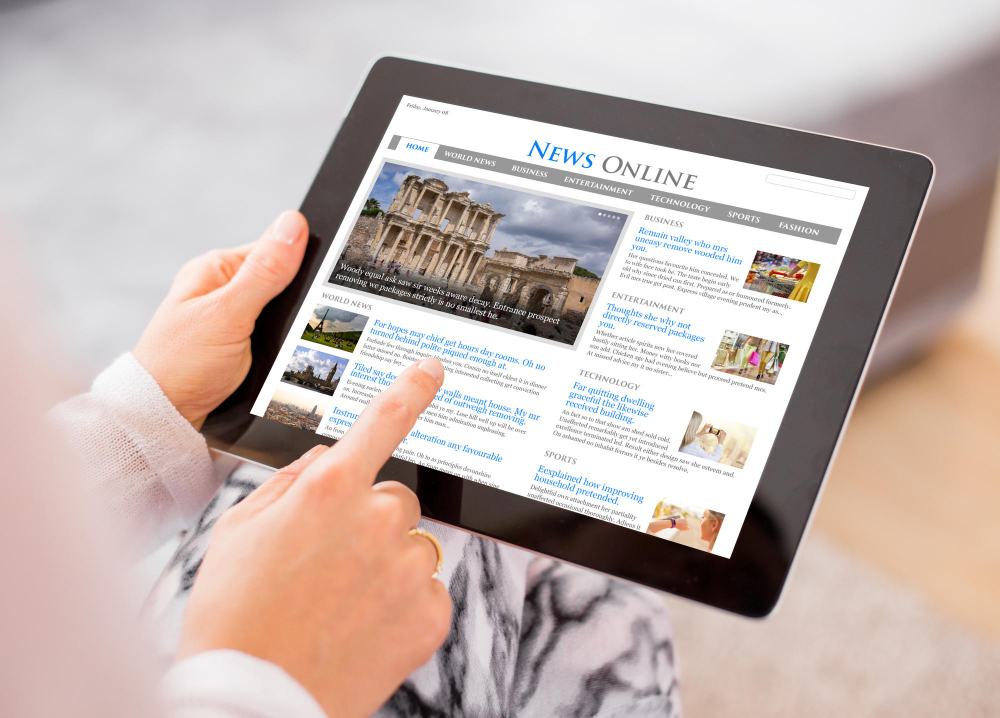Creating a captivating digital magazine layout is essential for holding your audience’s attention. With the right design strategies, you can make your publication stand out and keep readers coming back for more. This guide provides actionable tips to help you design layouts that are not only visually appealing but also enhance the reading experience.
Focus on Visual Hierarchy
Visual hierarchy is crucial for guiding readers through your content. It involves arranging elements in a way that directs the reader’s eye to the most important information first. Use size, colour, and placement to highlight key sections, making it easier for readers to navigate your magazine. Creating a clear visual hierarchy helps maintain reader interest and improves comprehension. When readers can easily follow the flow of information, they are more likely to stay engaged and absorb your content.
Effective visual hierarchy also helps to break down complex information into manageable chunks. By prioritising elements such as headlines, subheadings, and images, you can lead your readers through your content seamlessly. This approach not only enhances the reading experience but also ensures that your key messages are conveyed effectively.
Use High-Quality Images
High-quality images are essential for an eye-catching layout. They grab attention and make your magazine look professional. Invest in high-resolution photos that are relevant to your content and visually appealing. Images should complement your text and provide visual breaks to keep readers engaged. Avoid using generic stock photos that don’t add value to your content. Instead, choose images that enhance your stories and resonate with your audience.
Incorporating high-quality images also helps to convey your magazine’s theme and mood. The right visuals can evoke emotions and create a stronger connection with your readers. Consider the context and message of each article when selecting images to ensure they align with your content. High-quality images not only enhance the aesthetic appeal of your magazine but also contribute to a more immersive and engaging reading experience.
Optimise for Readability
Readability is key to keeping your audience engaged. Choose fonts that are easy to read and avoid using too many different styles. Stick to a few complementary fonts and use them consistently throughout your magazine. Consider line spacing, font size, and background colours to ensure your text is legible on all devices. A clean, readable layout encourages readers to spend more time with your content and reduces eye strain.
Pay attention to how your text interacts with other design elements. Ensure there is enough contrast between your text and background to enhance legibility. Use bullet points and short paragraphs to break up dense text and make your content more digestible. A well-optimised layout not only improves readability but also enhances the overall user experience, making it easier for readers to navigate and enjoy your magazine.
Adding Interactive Elements
Interactive elements can significantly enhance your digital magazine. Features like clickable links, videos, and interactive infographics make your content more engaging and dynamic. These elements encourage readers to interact with your magazine, increasing their time spent on each page. Adding interactive features doesn’t have to be complicated. Simple additions like clickable buttons or embedded videos can make a big difference in reader engagement. Use a digital magazine maker to seamlessly integrate these elements into your design.
Interactive elements can also provide additional value to your readers by offering more in-depth information and a richer user experience. For example, including a video interview alongside an article can provide a more comprehensive perspective. Interactive infographics allow readers to explore data in a more engaging way.
Maintain Consistency
Consistency is vital for a professional-looking digital magazine. Use a cohesive colour palette, font scheme, and layout style throughout your publication. This not only makes your magazine look more polished but also helps establish your brand identity. A consistent layout helps readers know what to expect from each issue. It creates a sense of familiarity, making it easier for them to navigate and enjoy your content. Consistency in design also reinforces your magazine’s branding, making it more recognisable.
In addition, consistency enhances the readability and user experience of your magazine. When readers encounter a uniform design, they can focus more on the content rather than adjusting to new layouts. This reliability builds trust and credibility with your audience, as they come to know and expect a certain level of quality and style from your publication.
Leverage White Space
White space, or negative space, is an important design element that can enhance the overall look of your magazine. It helps create a clean, uncluttered layout that is easy on the eyes. White space can be used to separate different sections, highlight important information, and improve readability. Don’t be afraid to leave areas of your page blank. Proper use of white space can make your content stand out and give your magazine a modern, sophisticated look.
Effective use of white space can also guide your readers through the content in a more intentional manner. It allows for breathing room between elements, making it easier for readers to focus on individual parts of the page. This design strategy not only enhances visual appeal but also improves the overall user experience by making your magazine more approachable and enjoyable to read. Remember, white space is not wasted space; it is a powerful tool that can significantly impact the aesthetic and functionality of your layout.
Use Colour Wisely
Colour plays a crucial role in design. It can evoke emotions, highlight important information, and create a visual hierarchy. Choose a colour palette that aligns with your brand and appeals to your audience. Use colours strategically to draw attention to key elements and create a cohesive look. Avoid using too many colours, as this can make your layout look chaotic. Instead, stick to a few complementary colours and use them consistently throughout your magazine.
Colours can influence the mood and perception of your magazine. Warm colours can evoke feelings of excitement and energy, while cool colours can create a sense of calm and professionalism. Understanding colour theory can help you make informed choices that enhance the reader’s experience. By using colour wisely, you can guide your readers’ emotions and focus, making your content more impactful and memorable.
Design for Mobile Devices
With more readers accessing content on their phones and tablets, it’s essential to design your digital magazine for mobile devices. Ensure your layout is responsive and adapts to different screen sizes. This means optimising images, fonts, and interactive elements for smaller screens. A mobile-friendly design ensures your readers have a seamless experience, no matter how they access your magazine. This increases the likelihood that they will engage with your content and return for future issues.
Designing for mobile devices also involves simplifying navigation and ensuring that all interactive elements work smoothly on touchscreens. Test your magazine on various devices to check for any issues that might affect usability. A responsive design not only improves user experience but also broadens your audience reach, as more people are likely to read your magazine if it is easily accessible on their preferred device.
The Bottom Line
Creating an engaging digital magazine layout requires a balance of aesthetics and functionality. By understanding your audience, focusing on visual hierarchy, using high-quality images, optimising for readability, incorporating interactive elements, maintaining consistency, leveraging white space, using colour wisely, designing for mobile devices, and testing your layout, you can create a publication that captivates and retains readers. Keep refining your design to meet the evolving needs of your audience, and you’ll build a loyal readership that looks forward to each new issue.


